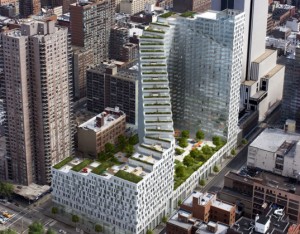My colleague Enrique Norten sent me a copy of TEN Arquitectos: The Limits of Form, which is hefty catalog of a retrospective exhibition of his firm’s work on display (March 3 – June 4) at the Museo Amparo inPuebla, Mexico. Actually, judging from the illustrations in the book, there are no limits to the forms that have been explored by TEN Arquitectos; the catalog is a dizzying array of commercial and institutional projects, rectangular, angled, round, square, torqued, canted, and slightly askew. As architects tend to do, Norten has included unbuilt as well as built work. This follows a well-established tradition, in which unbuilt projects and built work are accorded equal importance. Indeed, the architectural profession regularly awards prizes for buildings before they are actually built (which is sort of like giving an Oscar to an unfilmed shooting script). Paging through the Norten book can be unnerving, since digital representation has achieved such a high level of refinement that it is often impossible to tell the achieved from the imagined. The Guggenheim Museum in Guadalajara, for example, looks convincingly real, dappled shadows, puffy clouds, reflections on the glass, although the building is unbuilt. Equally convincing is an aerial view of Mercedes House, a condominium complex in New York, until I realize that this is merely a photomontage, a digital model inserted into a real photograph of the Upper West Side. Another victim of the recession I think, but I turn the page . . . and there is a construction photo of the real thing. At least I think it’s real. It’s hard to tell anymore.

